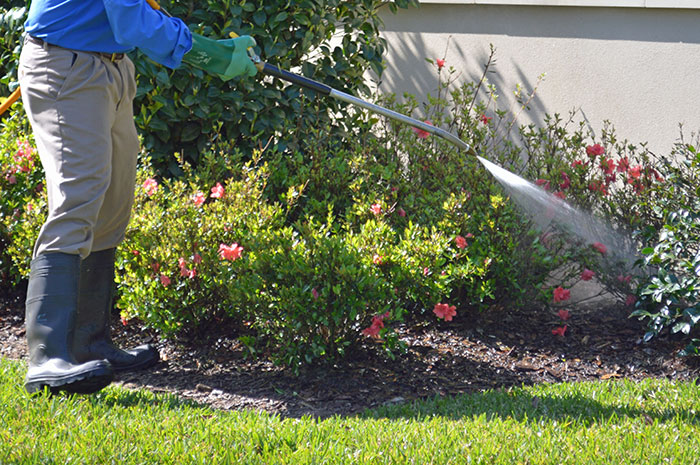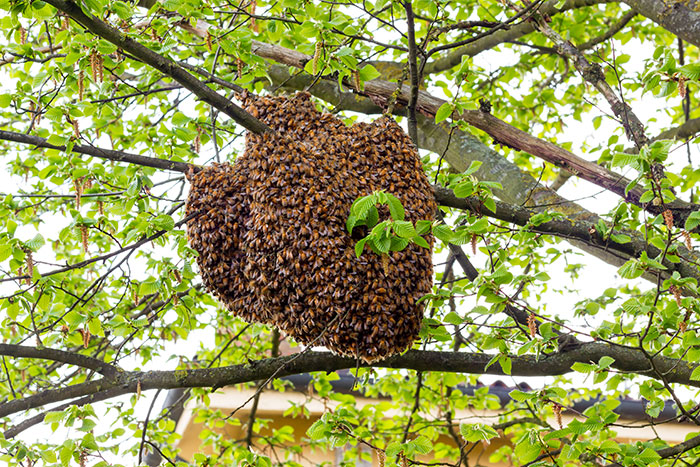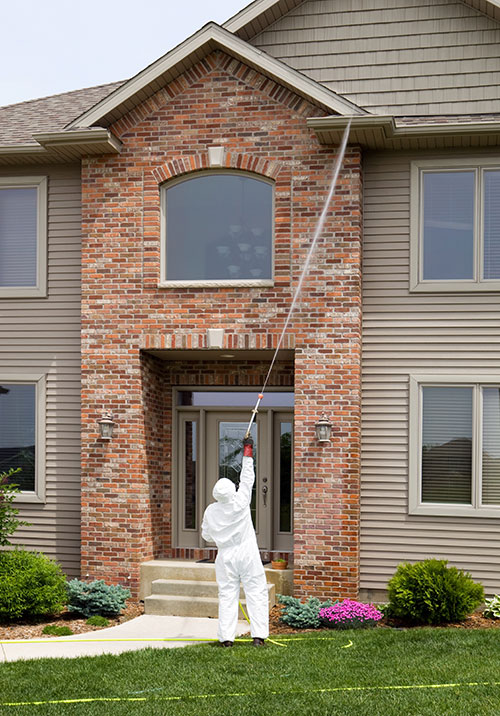Bee Removal in Montgomery & Anne Arundel County, MD
Protecting Your Home From a Bee Infestation
People tend to like bees because they are beneficial in so many ways. They pollinate flowers, produce delicious honey, and help crops thrive, but they can also be a nuisance when they make your house their home. A single bee colony set up near your home can contain over 8,000 bees, turning your backyard or garden into a buzzing nightmare. Just imagine what it would be like if the hive was inside the house!
Other types of bees such as Carpenter bees choose not to live in hives, but in holes in the exterior walls of your home. No matter what type of bee problem you have, you should not try to handle it on your own. Instead, contact the bee removal specialists at Montgomery Pest Control! We have been eliminating bees from the homes of Rockville residents for over 25 years, so you can count on us to do the job right the first time, every time.

How Bees Infest Homes
Social bees like to build their hives in protected spaces, like trees and sheds, but they can also be found in attics, pipes, boxes, wall cracks, and a variety of other places. Unlike social bees, Carpenter bees are solitary and prefer nesting in wood. They seek out suitable timber such as wood decks, overhangs, and other exposed woods on houses. Unpainted or stained redwood, cedar, and cyprus are all favorite materials.
Damage Caused by Carpenter Bees
Other than the presence of the hive, most social bees do not damage property. However, Carpenter bees can cause structural damage by tunneling through exterior timbers. Female Carpenter bees chew round nest entrances in flat wood surfaces and excavate tunnels in which to lay their eggs. Over time, timber inhabited by these bees can deteriorate, potentially allowing mold or fungi to infect the wood. Carpenter bees are also a favorite snack of woodpeckers, which may try to forage through the tunnels to get to the bees and cause further damage to your home’s exterior.

When Are They Most Common?
Bees hibernate over the winter, waking up in the spring when the weather warms up to begin collecting pollen. Newly developed Carpenter bees usually come out of their brood holes in April and May, and the bees remain active throughout the summer and fall.

Signs of a Carpenter Bee Infestation
- Perfectly round entrance holes in wood that are 3/8 of an inch in diameter
- Presence of sawdust on the ground near the hole
- Yellowish bee excrement near the entrance hole
- Visible insects
- Buzzing sound
Effective Bee Removal
Removing bees from your home can be a dangerous operation, so leave it to the professionals at Montgomery Pest Control. We will come out and do a full inspection to ascertain the extent of damage done and determine the best treatment method. From removing a bee hive from the wall of your home to spraying to ensure long-term safety, we will have your home bee free in no time at all!
